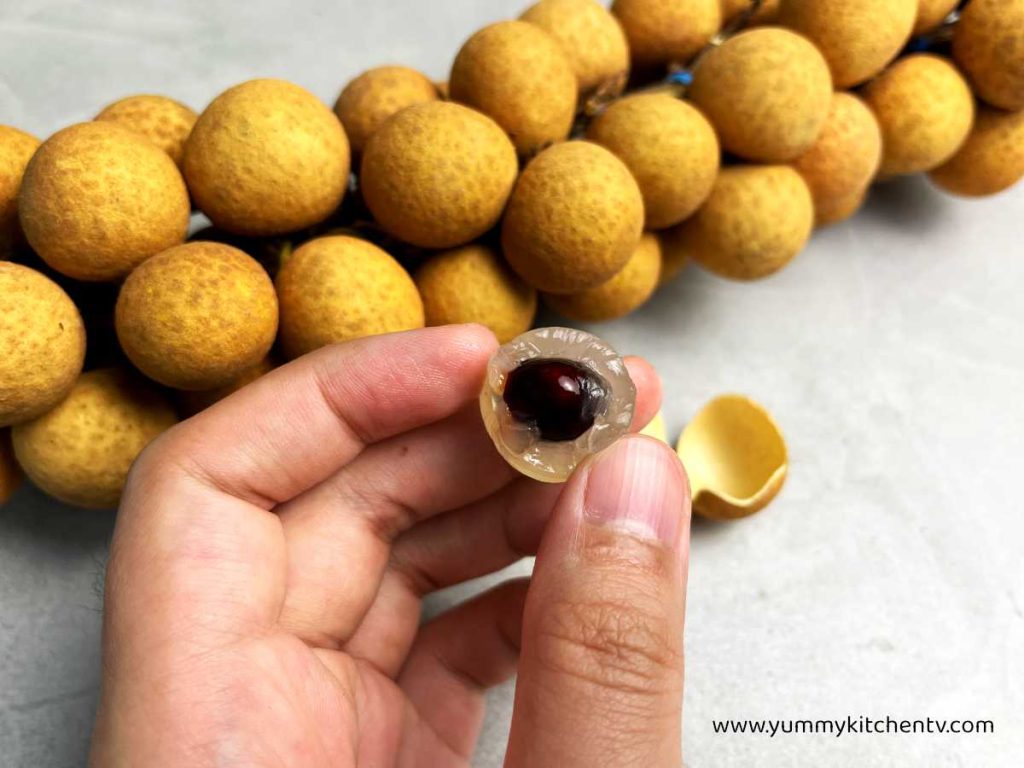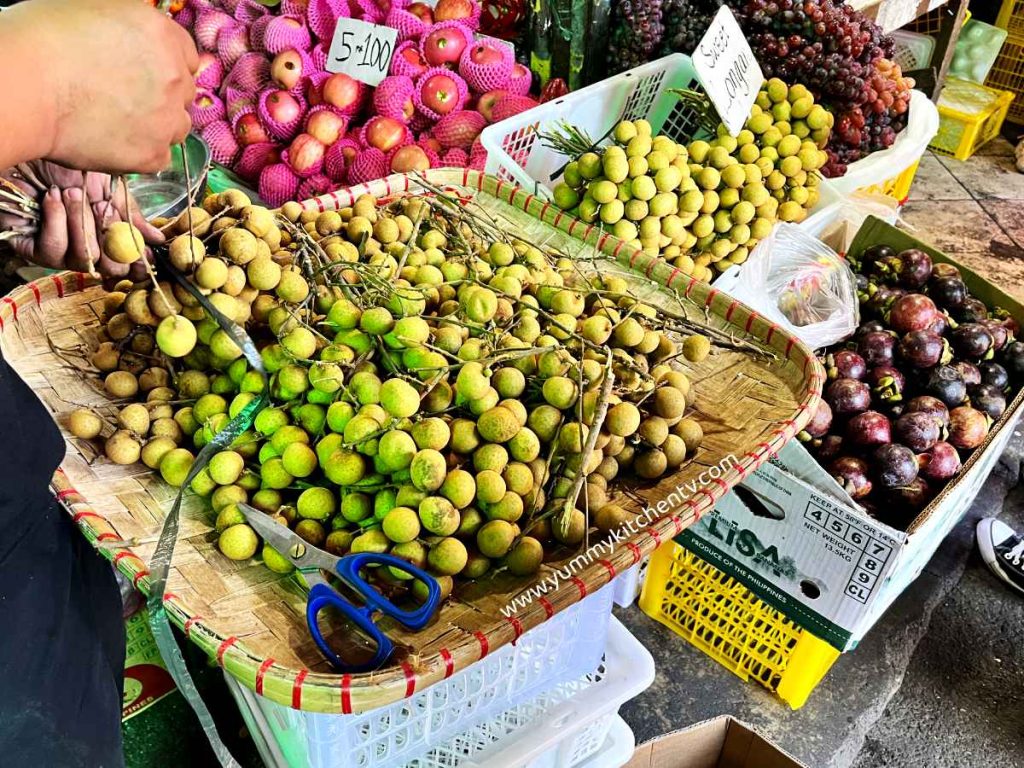The longan or known by its scientific name “Dimocarpus longan” is a fruit tree native to Asia, but can be found in areas with tropical climates. It has a small fruit with a gritty yellowish-brown shell, a sweet, juicy, edible translucent flesh, that tastes almost grape-like, you can find them fresh especially during July to August, and in off season dried, or canned in most Asian especially Chinese grocery stores.
A short Introduction
The Longan (pronounced laang-gn), or called the scientific name “Dimocarpus longan”, sometimes called the ‘Dragon’s eye’, because it resembles a gold eyeball, with the white flesh being the pupil, and seed the iris. A tropical tree that is part of the soapberry family where the lychee and rambutan are from, making them close relatives. The Longan fruit originated from China and tropical Asia, it is a bit sensitive to the frost, but can still grow in most subtropical areas. One of the earliest records found about this musky-sweet fruit came from the Han dynasty, where it was written that the emperor demanded his Shaanxi palace gardens to be decorated with longan and lychee trees. After 400 years, this project has made its way through parts of China where the production of Longan fruits made a foothold in the market. After years more with the number of people traveling and settling in different parts of the world, the longing for nostalgic food and ingredients paved a demand for the products to be exported, which also helped introduce this fruit to Australia, Thailand, and Hawaii in 1800, and Florida around the 1900s. Currently the countries of China, Northern Thailand, Taiwan,Cambodia, Vietnam, Laos, Sri Lanka, Malaysia, Philippines, Bangladesh, United States, and Australia are growing this longan fruit.
The Longan fruit tree, similar to the rambutan and lychee trees, are perfect for places that are not tropical, or have cooler climates. A Longan tree can grow up to 30 or 40 feet, with a 2.5 feet thick bark, and dropping thick branches, the leaves like most evergreen trees are oblong in shape, with blunt pointed tips, glossy and green. When fully ripened, you can harvest the cluster of 1-inch sized Longan fruit, during this time, it will have a bark textured shell, but is thin and easy to peel, squeezing it as one might a lychee or rambutan, showing off the tender, white, sweet, subtly musky, opaque flesh, with a large inedible lacquered-looking black colored seed.
For Culinary uses, this succulent sweet flesh that tastes almost like grapes is the only edible part of the fruit. Eaten raw, but are also found in Asian soups, desserts, snacks, savory dishes like sweet and sour food, or turned into a beverage like fermented longan wine, longan jujube tea, a healthy Chinese tea drink using dried longan, that helps soothe your throat and stomach, they can be found sold in wet markets, groceries or Asian medical stores, since they are considered as traditional medicine to soothe the nerves.
Longan benefits
Considered as a berry or sometimes considered a nut. But it is neither, being a fruit that is relatives with the lychees. Eaten as is, dried and made into a beverage, providing the body with a 40% of daily requirement of Vitamin C, they have a good amount of Vitamin B-6, folate and niacin. Here are some examples of Longan or Dried longan benefits :
- Help lose weight, this is a nice sweet treat for those who need fiber in their diet.
- Heals wounds faster, it has Vitamin C also called ‘ascorbic acid’ that helps with the body’s production of collagen, which in turn helps almost every part of the body heal quickly. Though some Asian households, especially those from an older generation, use the pulp itself as traditional medicine, topically placed on the wound or inflamed areas.
- Keeps you looking younger. Collagen production also keeps the body feeling and looking more youthful and glowy.
- Assists with controlling blood pressure. This fruit has antioxidants that reduce the solidifying or stiffness of arteries that can lead to cardiovascular problems.
- For anemia, in Chinese traditional medicine, the Longan extract combined with other herbs are used to treat those with low blood platelets, stress, and is anemia, especially recommended to be drunk by expecting and menstruating women.
- May have anticancer effects. Having a huge amount of polyphenolic which are compounds also found in garlic that keeps the body free from toxic radicals that can cause cancer.
Longan vs lychee
While in the same family, and are close relatives, here are some factors that make them unique from each other.
- Lychees have bumpy red skin, while longans have smoother yellowish-brown skin.
- Once peeled, they all might look the same aside from the size, where the lychees are bigger.
- In taste, Lychees are sweeter and have a subtle floral fragrance. While the Longans are more tart, subtly musky and not as aromatic.
A quick snack in the Philippines.
The longan tree was introduced to the Philippines from the United States in the early 1900’s. While popular in the Philippines the first sightings of the fruit will come after 6 years, with little or erratic fruit popping out each year. A sweet and tart fruit that you can find many eating raw as a snack or after dinner dessert, rarely seen added into traditional Filipino dishes. But you can find many Chinese-Filipino fusion dishes using this fruit as a sweetener in sweet and sour recipes.







